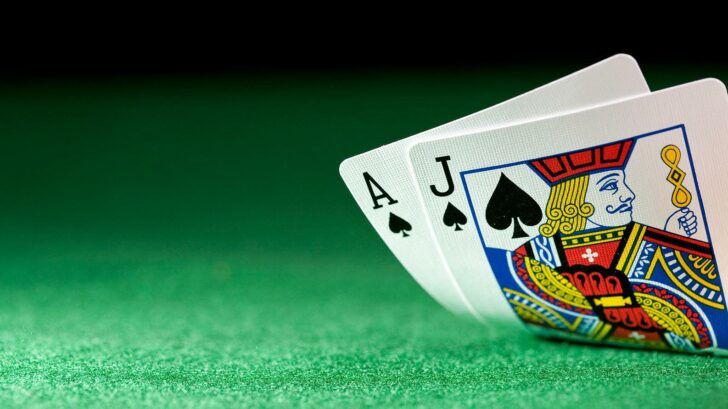4 Common Blackjack Rules Variations and How They Affect the House Edge

Blackjack is a game of mathematics, and even a minor tweak here or there can throw your chances of winning completely off (or on). Here are a few rules variations to pay attention to.
When talking about the house edge in blackjack the number which is thrown around most often is .5 percent, a nice round number which is a good deal lower than what you’ll find in other casino games like roulette, craps and slots.
But that .5 percent is a just a rough estimate, as the house edge can vary anywhere from .25 percent to 1.25 percent depending on the Blackjack rule variations. A lot of factors can influence the edge, including whether the dealer hits/stands on a soft 17, how many decks are used, even what the deck penetration is.
The best thing about blackjack is that you can control your own destiny, in large part simply by choosing the most player-friendly table on the casino floor. The worst thing is that the casino can sucker you if you don’t know what you’re doing. This piece will run through several of these rules explaining in detail how they can alter the edge. By the end, you’ll know how to spot a good table from a bad one.
Number of decks in play
There is a standard rule in blackjack that the fewer decks being used the better chance the player has of winning. This goes especially for card counters but matters for basic strategy players as well. In fact, a standard Vegas Strip game (blackjack pays 3:2, the player can double down on any two cards, and the dealer stands on a soft 17) dealt from a single deck will actually gave the player a mathematical edge!
For that reason Vegas casinos have tinkered with single-deck games to make them harder on the player, innovating such money-sucking rules as the dealer hitting on a soft 17 and blackjack paying out 6:5 instead of 3:2. It has gotten so bad that single-deck games are now considered one of the worst traps Vegas casinos have to offer.
The standard .5 percent house edge game is dealt from six decks, which is the most common these days, and an eight deck game will usually have an edge of roughly .6 percent. We advise you to look for games in the sweet spot of four to six decks.
Deck penetration
This a variation that many blackjack players doubt can affect the house edge very much. I’ll admit that was a skeptic myself. But blackjack legend Arnold Snyder swears that deck penetration affects the house edge more than any other factor, and after paying close attention during my own trips to the casino I was won over to the idea.
Deck penetration refers to how many cards are dealt from a deck before it’s reshuffled, and it can vary anywhere from 2% to 90%. It is important to advantage players who are using card counting systems because it determined how deep one can get into a count before the cards are shuffled.
As a general rule you never want to play a game which has a deck penetration lower than 60 percent, with higher always being better. According to Snyder’s formula, the difference in house edge (in the players favor) when using a card counting will double from a 55 percent penetration to a 65 percent penetration game!
The point is that a deeper penetration means that the count can run higher, so you can win more hands without having to risk you bankroll on using a very large betting spread.
Dealer standing on a soft 17
In very player-friendly blackjack rules variations like Las Vegas Strip the dealer will stand on a soft 17. This is WAYYYY better for the player, because the dealer’s chances of busting go from 0% to 69%. When you enter a casino, look for tables at which the dealer stands. This variation isn’t always easy to find, but it’s always worth playing.
All other rules being equal, the dealer hitting on a soft 17 will increase the house edge by about .2 percent, a very significant number in the grand scheme of things. If you wager $1,000 in a night playing blackjack you’re handing $2 to the dealer for free. That may not seem like a lot, but professional blackjack strategy players wager hundreds of thousands of dollars over the course of a year.
6:5 payout on blackjack
Recall one of the main reasons we don’t advise players to get mixed up in single-deck blackjack games. The 3:2 payout is absolutely essential for the player, because the dealer is going to win more hands regardless and the player needs to make up for that with big payouts.
All other rules being equal the 6-5 payout will increase the house edge by a whopping 1.70 percent, enough to melt anyone’s bankroll in no time. Usually these games have other features to make them a bit more player friendly, but they are never a good bet in the end.
Vegas regulars have a not-so-nice nickname for 6:5 payout blackjack: “sucker’s game.”




